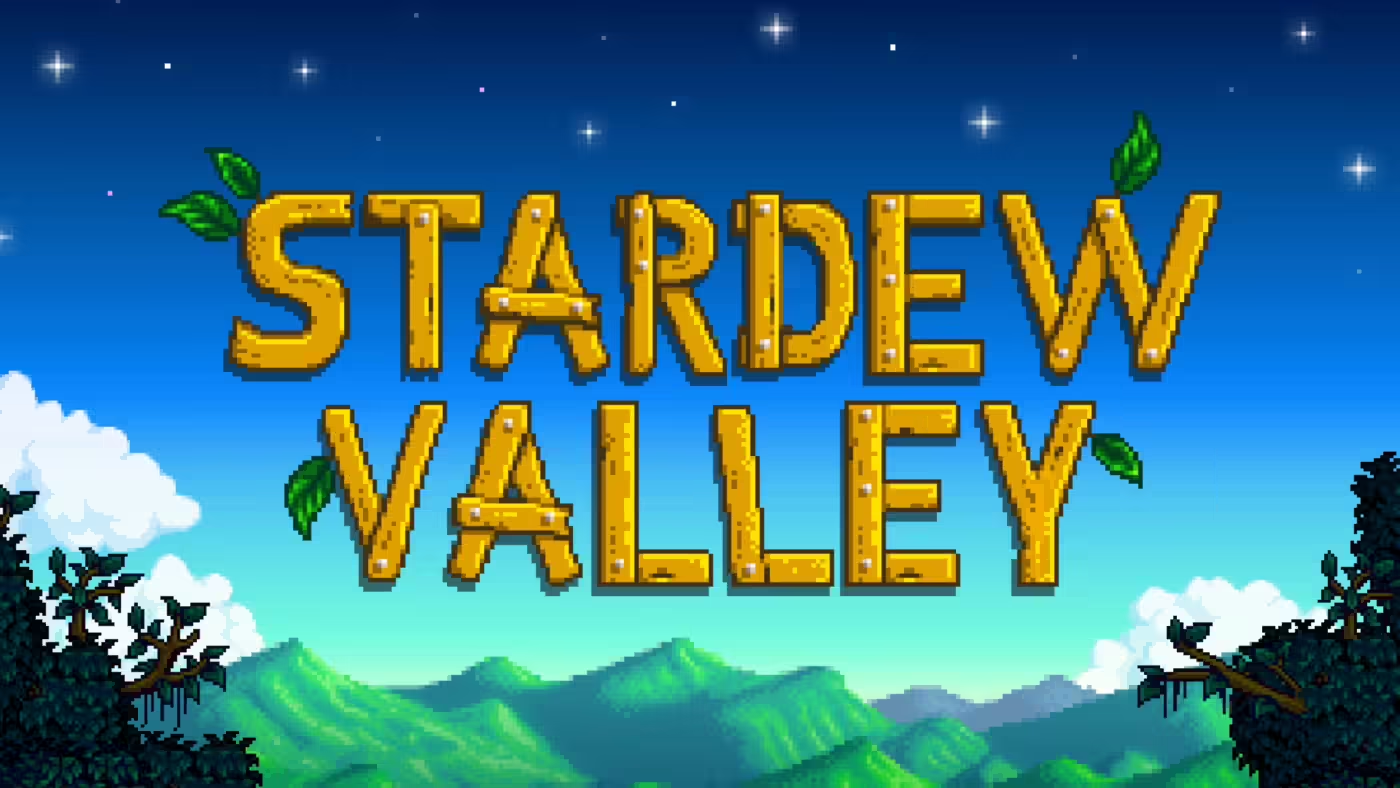Stardew Valley on Nintendo – A Perfect Match for Portable Gaming

Looking for a relaxing yet engaging game to enjoy on the go? Stardew Valley on Nintendo consoles, especially the Switch, offers a seamless blend of charm, strategy, and portability. Whether you’re commuting, lounging at home, or taking a break at work, this farming simulator is a pocket-sized escape into a pixelated paradise. Join games4nintendo.com to dive deep into the details.
What Is Stardew Valley?
Stardew Valley is a critically acclaimed indie farming simulation and role-playing game developed solely by Eric Barone, also known as ConcernedApe. The game begins as players inherit a neglected plot of land in the quiet town of Pelican Town, where they are free to transform it into a thriving farm. Beyond traditional farming activities like growing crops and raising livestock, players can fish, mine, craft, build relationships with the townsfolk, and even start a family. Featuring charming retro-inspired pixel art and an open-ended gameplay loop, Stardew Valley blends relaxation with rewarding progression. Since its launch in 2016, it has become a beloved staple in the indie gaming world, praised for its depth, charm, and emotional resonance.
Why Stardew Valley Shines on Nintendo Platforms
Stardew Valley is a perfect match for Nintendo platforms, especially the Nintendo Switch, known for its versatility and support for indie games. The hybrid nature of the Switch, allowing both handheld and docked play, makes it an ideal device for the relaxing pace of Stardew Valley. Whether you’re enjoying a quick farming session on the go or diving into extended gameplay at home, the game adapts seamlessly. The charming pixel art, soothing soundtrack, and immersive gameplay are all enhanced by the portability of the Switch. With its flexible design, Stardew Valley offers a personalized gaming experience, whether you prefer short bursts of play or long, uninterrupted farming marathons.
Gameplay Experience on Nintendo Switch vs. Other Platforms
When it comes to playing Stardew Valley, the experience can vary significantly depending on the platform you choose. While the game is available on multiple consoles, the Nintendo Switch offers a unique set of advantages that enhance the overall gameplay experience, as well as some limitations to keep in mind.
Pros of Playing on Nintendo Switch
- Portability: The greatest strength of the Nintendo Switch is its portability. Whether you’re commuting to work, taking a break, or lying in bed, you can easily continue tending to your farm, mining for resources, or socializing with the townspeople. The ability to play anywhere makes it incredibly convenient for quick sessions and long gaming marathons alike.
- Touch Controls: In handheld mode, the Nintendo Switch allows for intuitive touchscreen controls, offering a more interactive and streamlined navigation experience. This is especially useful when managing crops, organizing your inventory, or navigating the map.
- Offline Play: One of the significant benefits of the Switch version is its offline functionality. You don’t need an internet connection to dive into the world of Stardew Valley, allowing you to enjoy uninterrupted gameplay whether you’re on the go or at home.
- Multiplayer Mode: Stardew Valley on the Switch supports both local and online multiplayer, allowing you to invite friends to join your farm. The co-op mode brings a new level of fun and collaboration, making farming adventures even more enjoyable with others.
Limitations to Be Aware Of
While the Nintendo Switch provides many advantages, there are also a few drawbacks to keep in mind:
- Occasional Lag: During large farm operations or when there are many moving parts on-screen, you may notice minor performance issues or lag, especially in handheld mode. While the game still runs smoothly overall, this can occasionally affect gameplay.
- Update Delay: Stardew Valley on the Switch sometimes experiences a slight delay in receiving updates compared to other platforms, like PC. This means that new features or patches might be available elsewhere before they hit the Switch.
- Text Size: The text in handheld mode can appear small for some players, especially during intense farming or menu management sessions. This may cause some strain if you’re playing for extended periods.
How It Compares to PC, Xbox, and PlayStation Version
- PC: The PC version of Stardew Valley offers a more customizable experience with mod support and faster updates. However, it lacks the portability that the Switch offers, which makes it less convenient for on-the-go gaming.
- Xbox/PlayStation: Both the Xbox and PlayStation versions offer similar graphics and gameplay performance as the Switch. However, they lack the handheld capability of the Switch, meaning you’ll need to stay stationary to enjoy the game, which might be a dealbreaker for some players who prefer flexibility.
- Nintendo Switch: For those who enjoy gaming flexibility and casual play, the Nintendo Switch version of Stardew Valley stands out. Its portability, combined with a solid performance, multiplayer capabilities, and offline play, makes it the best choice for players seeking a versatile and enjoyable farming simulation experience.
Tips for Beginners Playing Stardew Valley on Nintendo
Starting your farming adventure in Stardew Valley on the Nintendo Switch can be both exciting and overwhelming, especially for beginners. To help you navigate the early stages and make the most of your farm, here are some essential tips that will guide you through the basics and set you up for success.
Best Starting Crops and Strategies
One of the first things to consider in Stardew Valley is which crops to plant, as they will determine your early income and resources. Here are some of the best crops to focus on at the start of your journey:
- Parsnips (Spring): These are perfect for beginners. They’re inexpensive, easy to grow, and offer a good introduction to the game’s farming mechanics, allowing you to practice watering and harvesting.
- Strawberries (Spring): A highly profitable crop, strawberries can be purchased during the Egg Festival in the Spring. Although they are a bit more expensive, they provide a significant return on investment and can be sold for a high price.
- Blueberries (Summer): Blueberries are a great crop to plant in the Summer, as they yield multiple harvests per plant. This means less work for you in the long run, with a higher overall profit.
Managing Your Time and Energy Efficiently
In Stardew Valley, time and energy are your two most valuable resources. Each day is limited to 24 hours, and you’ll need to make the most of it. Here are some tips to help you stay organized and make the most of your time and energy:
- Start Each Day with a Plan: Before jumping into your farm chores, take a moment to plan your day. Whether it’s watering crops, forging, fishing, or mining, having a clear plan will help you make the most of every day.
- Eat Forageable Items or Cook Basic Meals: To restore energy, use forageable items like berries, mushrooms, or flowers, or cook simple meals such as salads or omelets. This will allow you to work longer without tiring out.
- Invest in a Backpack Upgrade Early: A Backpack upgrade will significantly increase your inventory space, making it easier to store tools, crops, and materials without constantly running back to your chest. This is an early-game investment that will pay off quickly.
Upgrading Tools and Expanding the Farm
As you progress, upgrading your tools and expanding your farm will be essential for improving productivity and making life easier on the farm. Here are some key upgrades to prioritize:
- Upgrade Your Watering Can and Pickaxe First: The watering can is essential for managing crops, and upgrading it early will save you time and energy. Similarly, upgrading your pickaxe will help you mine faster and more efficiently, unlocking valuable resources for crafting and building.
- Build Silos Before Barns: Silos are important for storing hay for your animals during the winter. Building silos before investing in barns will ensure you have a steady supply of food for your animals when crops aren’t available.
- Prioritize the Greenhouse and Sprinklers: One of the best long-term investments is the greenhouse, which allows you to grow crops year-round. Additionally, sprinklers will automate the process of watering crops, saving you time and effort so you can focus on other aspects of your farm.
Frequently Asked Questions (FAQ)
Can I play multiplayer on the Nintendo Switch version of Stardew Valley?
Yes, the Nintendo Switch version supports both local and online multiplayer, allowing you to team up with friends and share your farming adventures. It’s perfect for those who want to experience the game together!
Is the gameplay different from other platforms?
The core gameplay of Stardew Valley remains consistent across all platforms, including the Nintendo Switch. However, the PC version has the added benefit of mod support, and updates are often rolled out earlier compared to the Switch version.
Does Stardew Valley support touchscreen controls on the Switch?
Yes, in handheld mode, Stardew Valley takes full advantage of the touchscreen controls, offering a more intuitive and tactile way to navigate menus, organize inventory, and manage your farm.
Is Stardew Valley suitable for children?
Absolutely! Stardew Valley is a family-friendly game with a relaxing and non-violent gameplay style, making it suitable for players of all ages. It’s a wonderful introduction to gaming for younger players, while still offering depth and enjoyment for adults.
Final Thoughts – Is Stardew Valley Worth It on Nintendo?
Stardew Valley on the Nintendo Switch offers a charming, immersive, and flexible experience that perfectly complements the console’s unique portability. While it lacks features like mod support and sometimes receives updates later than the PC version, the ease of playing this beloved game anytime and anywhere makes it a standout choice. Whether you’re a seasoned farmer or a newcomer to Pelican Town, the Switch version of Stardew Valley offers an unforgettable journey in one of the best indie games ever made—no matter where you are.












